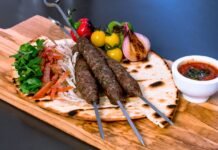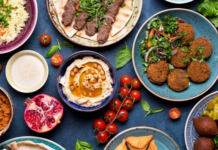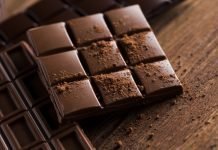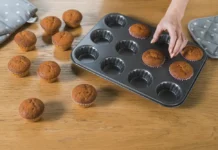Last Updated on January 18, 2024 by Asfa Rasheed
Cooking conversions can be complicated, but it doesn’t have to be overwhelming.
Measurements like cups to pints or gallons are easy with a kitchen conversion chart.
The following guide shows you how to convert measurements from teaspoons to tablespoons, ounces to cups, and more.
Measurements for Cooking Most of the world uses the metric system when cooking or baking, but there are still a few holdouts who use English measurements. So whether you’re American or British – no matter your location – be sure to check your measurements before you start.
If you want to convert between the two, there are a few things you need to know first. There are 12 fluid ounces in one cup.
There are 16 tablespoons in one cup.
Teaspoons? There are 60 of them in 1 tablespoon, and yes – it does make for some sticky math.
And there are 7/8 of a cup in one pint – with some interesting implications for the ever-popular cobbler recipe. To make matters worse, most recipes list measurements by volume rather than weight, which makes them even more confusing.
If you’re ready to convert, here’s how it works:
Start with the original measurement. There are about 473 milliliters in one cup, which means there are 8 tablespoons in a cup and 16 teaspoons in each tablespoon. Measurements are written as “cups” generally refer to liquid measurements because it’s easier to measure by volume than weight when you’re cooking.
Look at the second measurement (the one you want to convert). To get this number, take the first number and multiply it by the conversion factor. So for example, if you want 1/4 cup in tablespoons: 473ml x 0.25 = 118ml. For teaspoons: 29.57 x 0.3333333 = 9.708 (round up or down to get 8).
For pints, liters and gallons: 1 US pint = 16 US fluid ounces (fl oz) = 473 milliliters (ml) 1 US gallon = 231 in³ ≈ 3.785 liters (l)
If you’re not familiar with the metric system, here’s a quick cheat sheet: 1 milliliter (ml) = 1/5 tablespoon 6 ml = 1 teaspoon 15 ml = 1 tablespoon
Follow the same process above, but use milliliters for your second measurement. So if you want 2 tablespoons in teaspoons: 29.57 x 0.4 = 11.48 ≈ 12 Note that most people prefer to use teaspoons for small amounts and tablespoons for larger ones, so there’s no need to worry about accuracy. But if you really want to be sure the measurements are correct, stick with one system or the other rather than trying to combine them.
It should look like this:
If you prefer ounces and pounds: 1 fluid ounce (fl oz) = 2 tablespoons (tbsp) 1/8 cup ≈ 29.57 milliliters (ml) 1 pint = 16 fluid ounces (fl oz) 1 pound (lb)= 16 ounces (oz)
Remember to use the same type of measurement for both measurements; you can’t combine teaspoons and tablespoons, or ounces with pounds.
Read More: Best refreshing drinks for summer
Now that you know how to convert measurements and interpret recipes, it should be much easier for you to create delicious meals and desserts.



























